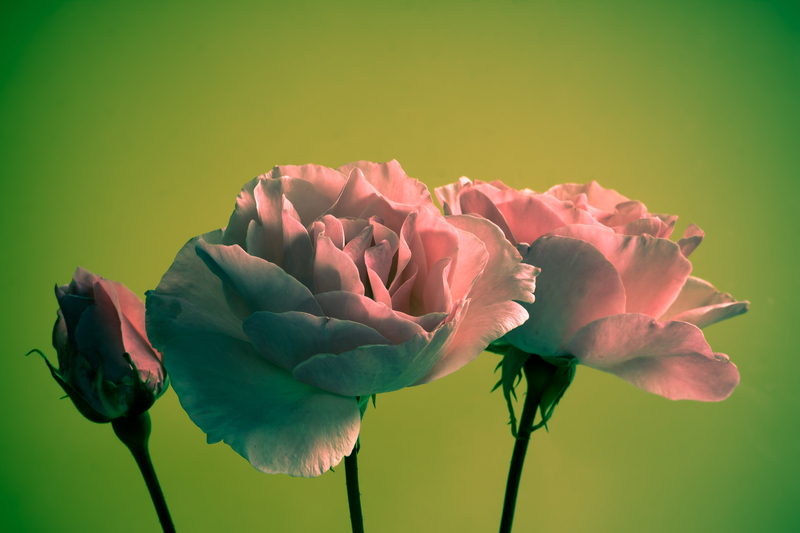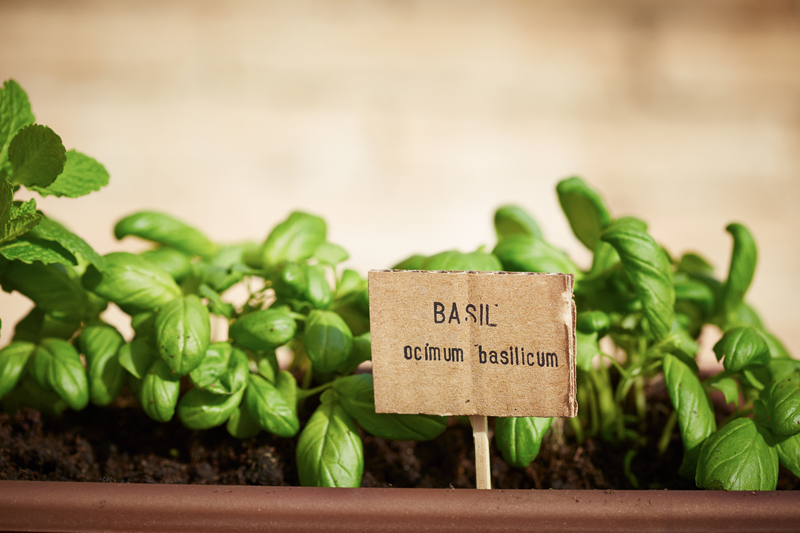Create Year-Round Interest in Small Gardens with These 10 Evergreens
When it comes to designing a small garden, creating year-round interest is essential. Choosing the right plants ensures your garden stays visually appealing, even through the winter months. Evergreens are the key to providing constant color, structure, and texture. Whether you're new to gardening or looking to refresh your outdoor space, our guide highlights the top 10 best evergreens for small gardens that thrive throughout the year and offer beauty in every season.
Why Include Evergreens in Small Garden Designs?
Evergreen plants, as the name suggests, retain their foliage and rich colors all year. Landscaping with evergreens offers a low-maintenance solution to garden design, providing a lush green backdrop regardless of the weather. Here are key reasons to add evergreens to your limited space:
- Consistent Color: Evergreens maintain their leaf color throughout all four seasons.
- Structure and Texture: They add architectural interest and depth to garden beds.
- Privacy and Screening: Strategic planting of evergreens creates secluded spaces and windbreaks.
- Wildlife Habitat: Many evergreens provide shelter and food for birds and beneficial insects.
- Low Maintenance: Most evergreen shrubs and trees require minimal pruning and care.

How to Choose the Best Evergreens for Small Gardens
The trick to successful evergreen gardening in limited spaces is selecting compact varieties that won't outgrow their allotted areas. Before choosing, consider:
- Mature Size: Pick dwarf or slow-growing cultivars that stay tidy and manageable.
- Growth Habit: Choose upright, rounded, or mounding shapes depending on your garden layout.
- Sunlight Requirements: Check whether your space is mostly sun, shade, or a mix.
- Soil and Water Needs: Match plant needs to your garden's soil and moisture.
- Seasonal Interest: Consider foliage color changes, cones, flowers, or berries.
Now, let's explore ten stunning evergreens for small gardens that promise interest and charm no matter the month.
10 Evergreen Plants for Lasting Interest in Small Spaces
1. Boxwood (Buxus sempervirens)
A true classic in the world of evergreens, boxwood is prized for its dense, compact growth and attractive green foliage year-round. Ideal for formal hedges, parterres, or as standalone features, boxwoods can be clipped into neat shapes or allowed to grow naturally.
- Growth habit: Rounded, dense shrub, usually kept at 1-3 feet (dwarf varieties available).
- Best use: Garden borders, topiary, containers, or low hedging in tight spaces.
- Bonus: Tolerant of regular pruning and shade.
2. Japanese Skimmia (Skimmia japonica)
Renowned for easy care and compact size, Japanese Skimmia offers glossy, aromatic leaves, showy white flower clusters in spring, and long-lasting red berries (on female plants) into winter.
- Growth habit: Low, mound-like shrub, typically 2-3 feet tall and wide.
- Best use: Shaded gardens, underplanting trees, containers.
- Bonus: Attracts pollinators and birds; deer-resistant.
3. Dwarf Mountain Pine (Pinus mugo 'Mops')
For those who want to bring a touch of alpine charm to their yard, dwarf mountain pine delivers. Its soft, dark-green needles and tidy, globular shape make it perfect for tiny landscapes and rock gardens.
- Growth habit: Slow-growing dome, about 2-3 feet tall and wide at maturity.
- Best use: Containers, rockeries, or as specimen plants.
- Bonus: Tolerates harsh conditions and poor soils.
4. Heavenly Bamboo (Nandina domestica)
Heavenly bamboo is not a true bamboo, but an elegant evergreen shrub that dazzles with fiery red, orange, and yellow foliage in cool weather, and delicate white flowers in spring.
- Growth habit: Upright, bushy shrub, typically 2-4 feet, with dwarf types available.
- Best use: Mixed borders, courtyards, and as a focal point in containers.
- Bonus: Colorful berries provide winter interest; drought-tolerant once established.
5. Dwarf Rhododendron and Azalea
With lush green foliage and spectacular spring blooms in shades of pink, purple, red, and white, dwarf rhododendrons and evergreen azaleas are must-haves for small, acid-loving gardens.
- Growth habit: Rounded shrubs, generally 1-3 feet tall for compact varieties.
- Best use: Containers, shaded or woodland gardens, under larger trees.
- Bonus: Attract hummingbirds and bees when in flower.
6. Yew (Taxus baccata 'Repandens' and Dwarf Cultivars)
Yews have been stalwart evergreens for centuries thanks to their long life, rich green needle foliage, and versatility. Dwarf forms such as 'Repandens' work wonderfully in small spaces.
- Growth habit: Low, spreading mound up to 2 feet tall but spreading wider.
- Best use: Groundcovers, edging, shaded corners, or under trees.
- Bonus: Easy to shape; highly shade-tolerant.
7. Dwarf Holly (Ilex crenata and Compact Varieties)
For something resembling boxwood, but with glossier foliage and petite, black berries, dwarf holly is ideal. Japanese holly (Ilex crenata) is extremely popular in urban and courtyard gardens.
- Growth habit: Compact, tightly branched shrub, 2-4 feet tall depending on selection.
- Best use: Topiary, formal gardens, foundation plantings, containers.
- Bonus: Tolerates light pruning and coastal conditions.
8. Sweet Box (Sarcococca confusa)
If you need year-round evergreen coverage in dry shade, sweet box is unbeatable. This hardy plant delights in winter with heavily scented tiny white flowers followed by glossy black berries.
- Growth habit: Dense, slow-growing mound, 2-3 feet tall and wide.
- Best use: Shaded pathways, under larger shrubs, or in woodland designs.
- Bonus: Extremely tough and deer-resistant.
9. Compact Oregon Grape (Mahonia aquifolium 'Compacta')
With shiny, holly-like leaves, compact Oregon grape brings bold texture and color shifts from bronzy-red new growth, rich green summer leaves, and spiky yellow flowers in late winter.
- Growth habit: Bushy, upright evergreen, 2-3 feet tall and wide.
- Best use: Mixed shrub borders, woodland edges, wildlife gardens.
- Bonus: Produces edible berries loved by birds.
10. Dwarf Conifers (Juniperus, Thuja, and Chamaecyparis Species)
No small garden is complete without a collection of dwarf conifers. Consider varieties like Blue Star juniper or Thuja occidentalis 'Teddy' for whimsical foliage shapes and year-round color.
- Growth habit: Wide range - globe, columnar, or spreading forms under 3 feet tall.
- Best use: Rock gardens, patio planters, or as accent features.
- Bonus: Conifers require little maintenance and are long-lived.
Design Ideas for Year-Round Evergreen Interest in Small Gardens
Blending evergreens into your garden can be both creative and functional. Here's how to maximize their year-round appeal:
- Layer for Depth: Mix varieties of different heights (groundcovers, dwarf shrubs, and small trees) for a 3D effect.
- Use Contrasting Foliage: Combine fine-needled conifers with broadleaf evergreens for a dynamic look.
- Add Color with Berries and Flowers: Select species like skimmia, mahonia, and nandina for blooms or berries in cool seasons.
- Go Vertical: Columnar or upright types add structure and don't crowd horizontal space.
- Mix with Other Plants: Pair evergreens with perennial flowers and bulbs for bursts of seasonal color.
Tips for Caring for Evergreens in Small Spaces
- Water Wisely: Newly planted evergreens require regular moisture, but established plants tolerate periodic dry spells.
- Mulch Well: Mulch retains soil moisture and suppresses weeds, mimicking forest conditions.
- Feed and Prune: Use a slow-release fertilizer in spring, and trim only as needed to shape or remove dead growth.
- Check Spacing: Avoid overcrowding by giving each plant enough room for airflow and mature width.
- Watch for Pests: Evergreens generally resist pests, but inspect regularly for issues such as scale or spider mites.
Frequently Asked Questions About Evergreens for Small Gardens
Which evergreen grows best in shade?
Sweet box (Sarcococca), yew (Taxus), and Japanese skimmia thrive in shaded and semi-shaded garden spots.
What evergreen stays small and manageable?
Dwarf varieties of conifers (such as Pinus mugo 'Mops'), compact hollies, and boxwood all remain tidy with little pruning.
How do I add color to my evergreen garden in winter?
Plant nandina, skimmia, and mahonia for winter berries and rich foliage tints. Conifers also offer blue, gold, and silver hues.
Can I grow evergreens in containers?
Absolutely! Choose slow-growing types like dwarf yew, boxwood, or Blue Star juniper, and ensure pots have good drainage.

Conclusion: Enjoy Evergreen Beauty All Year Long
Creating a year-round green oasis in a small garden is simple when you select the right evergreens. From elegant boxwood to colorful nandina, these versatile plants provide lush foliage, vibrant berries, and seasonal blooms--ensuring your garden has something to celebrate in every season.
With strategic placement, creative pairing, and proper care, evergreens bring structure, interest, and tranquility to even the smallest outdoor spaces. Transform your garden into a peaceful retreat that's always in style and always alive with color!
Start Planning Your Evergreen Garden Today
- Assess your garden's size, light conditions, and soil type.
- Choose a mix of evergreen shrubs, dwarf trees, and groundcovers from our top 10 list.
- Combine textures, shapes, and foliage colors for all-season impact.
- Enjoy a stunning, ever-evolving landscape--365 days a year!
Looking for more inspiration? Check out our related articles on low-maintenance shrubs, container garden ideas, and using evergreens for privacy in urban yards.